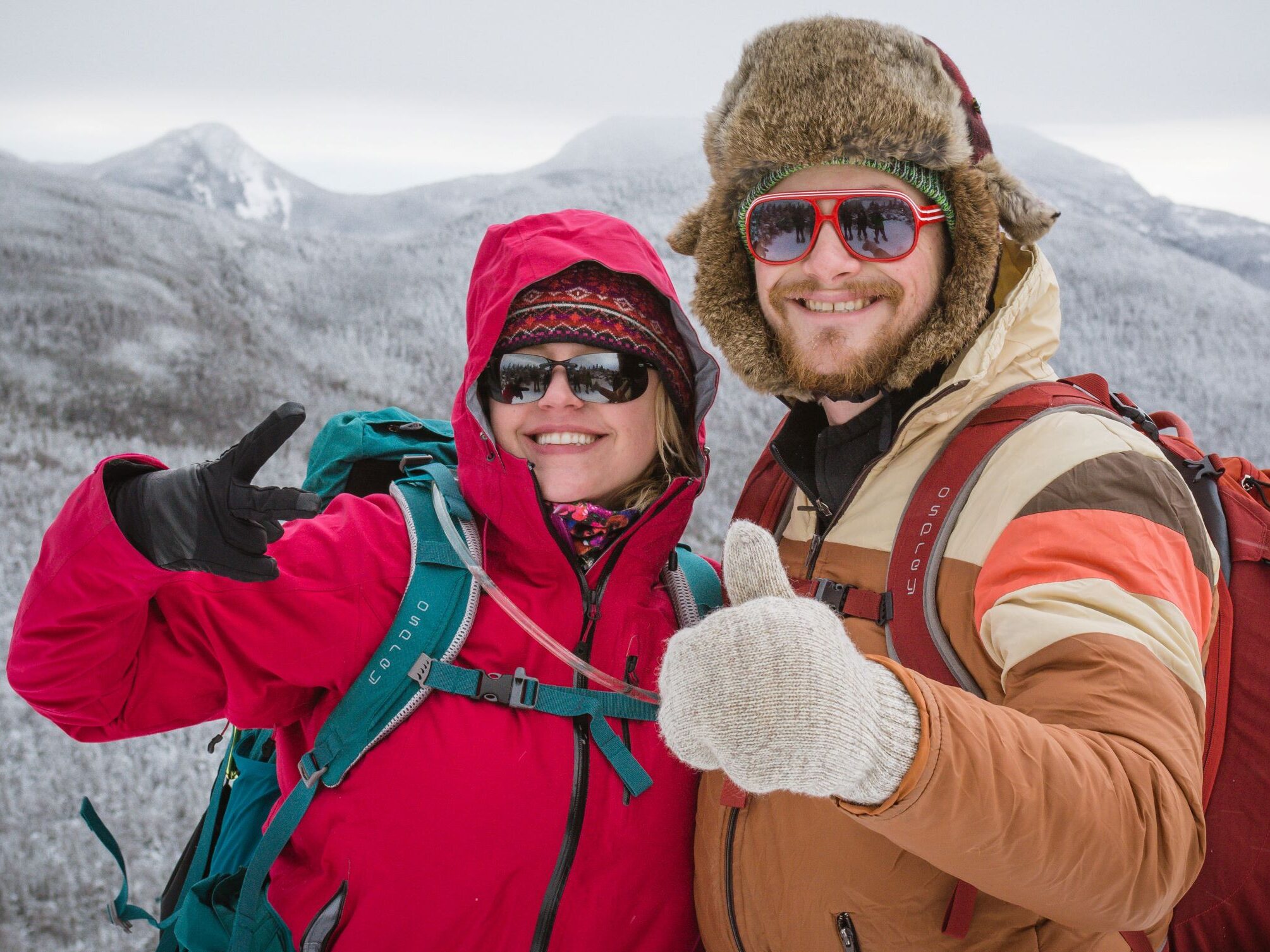Sun and Snow
Sun and Snow
The following appeared in the Winter 2023 issue of Adirondac Magazine
By Dr. Tom Welch
In several recent columns, I have drawn attention to the problem of sun-induced skin injury—surprisingly, the major cause of death associated with outdoor recreation. It’s time for a reminder that sun protection is not just for the summer.
My introduction to the need for sun protection came while mountaineering in the Northern Cascades in late January one year. The combination of vast expanses of unshaded snow and ice, clear skies, absent pollution, and high altitude subjected us to intense UV exposure, both directly and reflected. Fortunately, we had been well schooled in sun protection and got through the expedition unscathed.
Although severe snow-enhanced sun injury is most common at higher altitudes, it can occur in any setting of clear skies and expansive snow fields. Thus, the Adirondack skier on a sunny day could be at risk.

How does the combination of altitude and snow create an enhanced risk of sun damage, even in winter? First, the atmosphere at altitude is less dense than that at sea level. This means that there is less opportunity for UV light to be absorbed and filtered before striking us. Similarly, alpine areas are generally less polluted, also allowing more UV radiation through. Of course, we also don’t have the luxury of taking a breather in the shade of trees while traversing a glacier.
The reflective nature of snow and ice also contributes to the problem. Dirt and vegetation absorb most of the sunlight striking them, while over 90 percent of light hitting clean snow is reflected. Thus, the winter climber is subjected to radiation both direct and reflected. The latter can hit spots about which we don’t typically worry in the summer: under the chin and in the nostrils, for example. Because of intense sunlight, coupled with dry cold air, the lips are also at great risk.
Fortunately, bitter temperatures force us to keep most of our skin well covered while traveling on snow and ice. What should we do for those areas that are exposed? As in the summer, sunscreens with SPF factors of thirty and above are the mainstay. Stopping to reapply sunscreen in cold, blowing snow is not pleasant, so I also recommend “barrier” types of sun protection; zinc oxide is a good example. These leave an impenetrable “paste” on exposed surfaces such as the nose and cheekbones. Don’t forget areas that can be hit by reflected snow, including under the chin and the interior of the nostrils.

Regular sunscreen or zinc oxide may not be practical or comfortable for the lips. Fortunately, there are lip balms with sunscreen; be sure to find one with an SPF of thirty or above. There are also specially formulated zinc oxide preparations suitable for mucous membranes such as the lips.

A final word about the importance of eye protection in snow and ice environments. The cornea is the “skin” of the eyes, and is particularly sensitive to UV radiation. Prolonged, unfiltered exposure can ultimately result in a horrible problem called “snow blindness,” an exquisitely painful condition which renders travel nearly impossible. Short of this problem, accumulated UV exposure can be a risk factor for early cataract development. Therefore, high-quality wrap-around sunglasses are an essential element for winter mountain travel. It even makes sense to have a spare along—at least one for the party. I have a pair of glacier glasses with side shields that transmit only about 10 percent of light hitting them; while these would be far too dark for July on Mt. Marcy, they are ideal for extreme winter mountaineering at altitude.
While hikers who confine themselves to the Northeast may not be as vulnerable as those at higher altitudes, they are still vulnerable. And the ADKer heading to the Rockies for some spring skiing may especially want to heed these warnings.
Tom Welch, MD, is a physician at Upstate Medical University in Syracuse and an active member of the Wilderness Medical Society. He is a licensed professional guide and a certifying instructor for the Wilderness Education Association, and has guided groups in the Adirondacks, Montana, and Alaska. More information is available at his website and blog, adirondoc.com.
Related
High Peaks Conditions Report Disclaimer
All forms of outdoor recreation (including, but not limited to, hiking, skiing, watersports, and rock […]
Benefits of Visitor Use Management
Since the creation of some of the first parks and protected areas in the United […]
ADK Outdoor Gear Consignment Program
In 2023, Adirondack Mountain Club launched an outdoor gear consignment program at Cascade Welcome Center […]
Mud Season: Quick Facts
Just what is mud season? Running anytime from late March into mid-June—it varies each year […]

